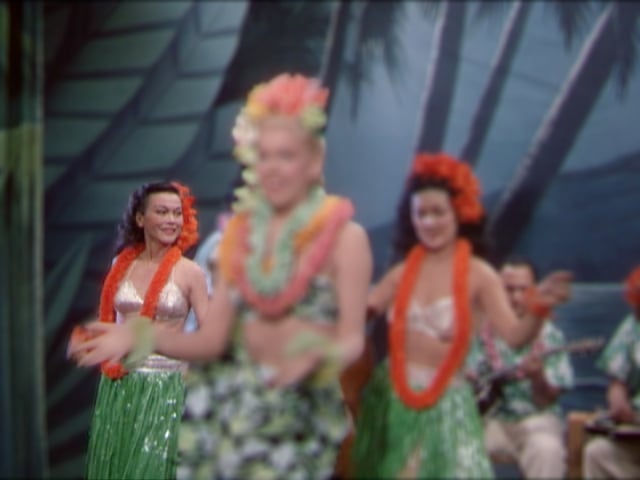
© » KADIST
Miljohn Ruperto
Miljohn Ruperto’s silent video work Appearance of Isabel Rosario Cooper is an archive of ghosts. The video’s title figure, a Filipina actress, vaudeville dancer and singer who played racialized, peripheral roles in Hollywood in the 1940s and 1950s, flits in and out of a montage of scenes. Ruperto digitally modified the 16mm film by blurring the background and all of the figures in each scene except for Cooper herself.

© » KADIST
Wong Hoy Cheong
Days of Our Lives: Reading is from a series of work was created for the 10th Biennale de Lyon by the artist. It marks a new dimension of his ongoing effort to negotiate with the postcolonial reality across the world, with a unique interventional strategy to deal with the French society. Named after a soap opera in U. S. which has been running practically everyday for over 40 years, Days Of Our Lives is a series of six photographs which explores this new Europeaness.

© » KADIST
Wong Hoy Cheong
Created for the tenth Lyon Bienniale, in Days of Our Lives: Playing for Dying Mother, Wong’s ongoing negotiation of postcolonial globalization takes aim at French society. Named after an American daytime soap opera that been running for over forty years, Days of Our Lives is a series of six photographs that explore contemporary Europeaness. Here, domestic, everyday scenes drawn from French paintings in the Museum of Fine Arts in Lyon——preparing food, relaxing, reading and playing music, giving charity to the poor, being evicted from home, or going off to War—are reenacted by Muslim Nigerians, Iranians, Turkish, and Buddhist Burmese minorities.

© » KADIST
An-My LE
The print Patient Admission, US Naval Hospital Ship Mercy, Vietnam (2010) features an Asian Buddhist monk and an American Navy Solider on board the Mercy ship –one of the two dedicated hospital ships of the United States Navy– sitting upright in their chairs and adopting the same posture. In the background, the steel pillars creates a division of space implying a separation the two men according to their geographic regions of origin or residence, their vocations, their ethnicities, and their attitudes toward war. Yet, the mirrored body language of the two characters also suggests their reconciliation into a dialogue perhaps characterized by the protagonists’ physical and spiritual conversation.

© » KADIST
Eleanor Antin
Comprised of fifty-one photographic postcards, Antin’s 100 Boots is an epic visual narrative in which 100 black rubber boots stand in for a fictional “hero” making a “trip” from California to New York City. Over two-and-a-half years, Antin photographed the boots against different backdrops across the U. S., and then turned the pictures into postcards, which she then mailed to approximately 1,000 people around the world. In conjunction with the boots’ “arrival” in New York City, the postcards were exhibited at the Museum of Modern Art.

© » KADIST
Zanele Muholi
As a visual activist for the rights of Lesbian, gay, bisexual, transgender, queer and intersex (LBGTQI), Muholi’s photographs radically transgress the conventional perception of lesbian and transgender communities in South Africa. Members of the LBGTQI community who suffer from continuous attacks — “corrective” and “curative rapes”, physical and psychological assaults, and hate crimes — Muholi works from her own community to create strong and positive images of empowered individuals. As visual statements, her photographs seek to dignify the members of an often hidden, voiceless and marginalized community.

© » KADIST
Charwei Tsai
Charwai Tsai’s photograph documents her Hermit Crab Project installation upon the construction site of gallery Sora in Tokyo. Tsai placed live hermit crabs and shells in a sandy enclosure at the site, writing fragments of The One China policy and the Taiwanese Independence statements on each shell. As the hermit crabs moved and swapped shells, they formed new connections between the statements.
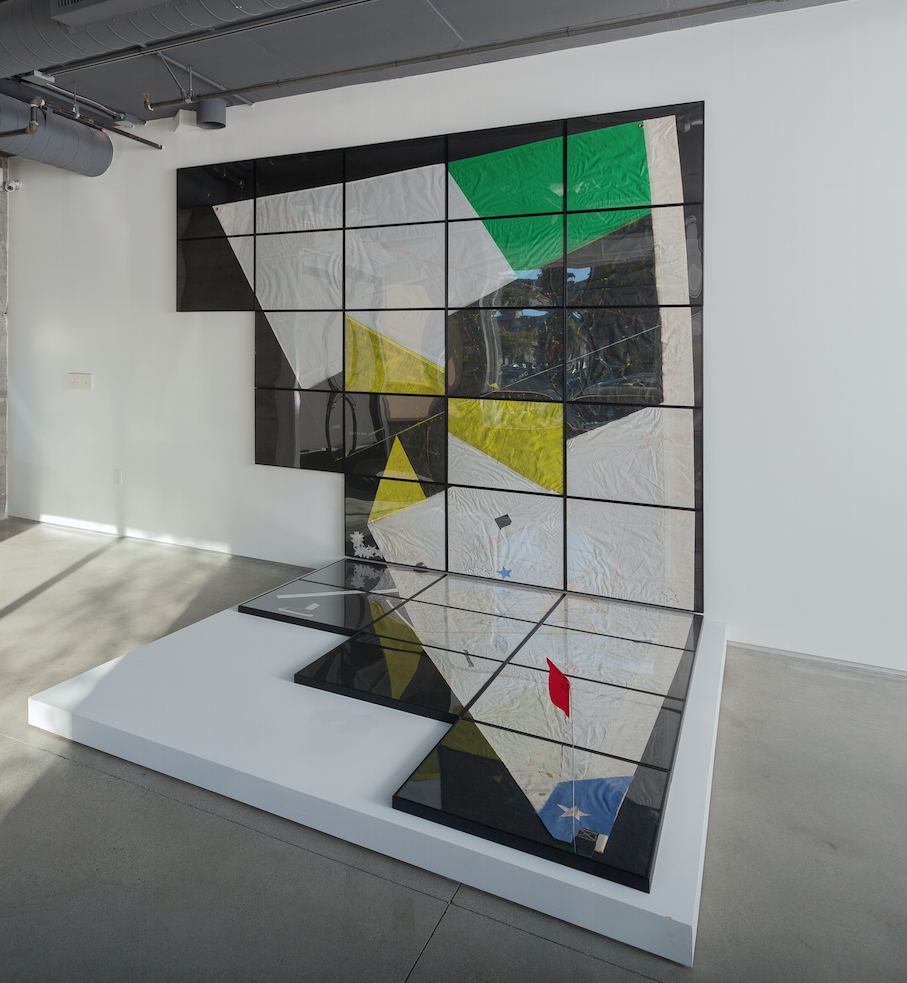
© » KADIST
Enrique Ramirez
Ramirez’s The International Sail is the fifth in a series that features an upside-down worn out, mended and fragmented boat sail. These works epitomize the idea of perpetual movement and migration while carrying a deep personal meaning in the creative process, as the artist’s father himself, still living in Chile, mends and sends the sails to his son, living in Europe. The reversed position of the sail recalls both the shape of South America itself and the Eurocentric view that in the Southern Hemisphere, everything is “upside-down.” The stitches themselves create an illusion of an alternative political geography, and the framed-cuts impose a cartographic grid.

© » KADIST
Zanele Muholi
As a visual activist for the rights of Lesbian, gay, bisexual, transgender, queer and intersex (LBGTQI), Muholi’s photographs radically transgress the conventional perception of lesbian and transgender communities in South Africa. Members of the LBGTQI community who suffer from continuous attacks — “corrective” and “curative rapes”, physical and psychological assaults, and hate crimes — Muholi works from her own community to create strong and positive images of empowered individuals. As visual statements, her photographs seek to dignify the members of an often hidden, voiceless and marginalized community.

© » KADIST
Elad Lassry
In his composition, Chocolate Bars, Eggs, Milk, Lassry’s subjects are mirrored in their surroundings (both figuratively, through the chocolate colored backdrop and the brown frame; and literally, in the milky white, polished surface of the table), as the artist plays with color, shape, and the conventions of representational art both within and outside of the photographic tradition. Elad Lassry explores how visual languages are constructed across multiple disciplines and media. His larger body of work responds to the relationship between artistic mediums and their forms, and his prints question familiar modes of viewership and our continuous desire to find and identify clear narratives in photographs.

© » KADIST
Miljohn Ruperto
Miljohn Ruperto’s high-definition video Janus takes its name from the two-faced Roman god of duality and transitions, of beginnings and endings, gates and doorways. He is usually depicted with two faces as he looks both forward and backward, to the future and the past. The video, which is deftly animated in collaboration with Aimée de Jongh, presents a close-up of a dying “duck-rabbit,” a vivified version of an ambiguous illustration made popular by the Austrian-British philosopher Ludwig Wittgenstein in his Philosophical Investigations .

© » KADIST
Wong Hoy Cheong
Re: Looking marks a new phase in Wong’s work which connects his region’s history with other parts of the world. The video—located in an imagined contemporary Malaysian middle-class living room, a space of a fictive former imperial power—explores the precarious link between fact and fiction, fakery and authenticity by overlaying three believable, authoritative forms: a documentary, a website, and a realistic reconstruction of a contemporary home. It is rife with occidental colonial documents and exotic cultural artifacts—the trophy-evidence of Empire-making.
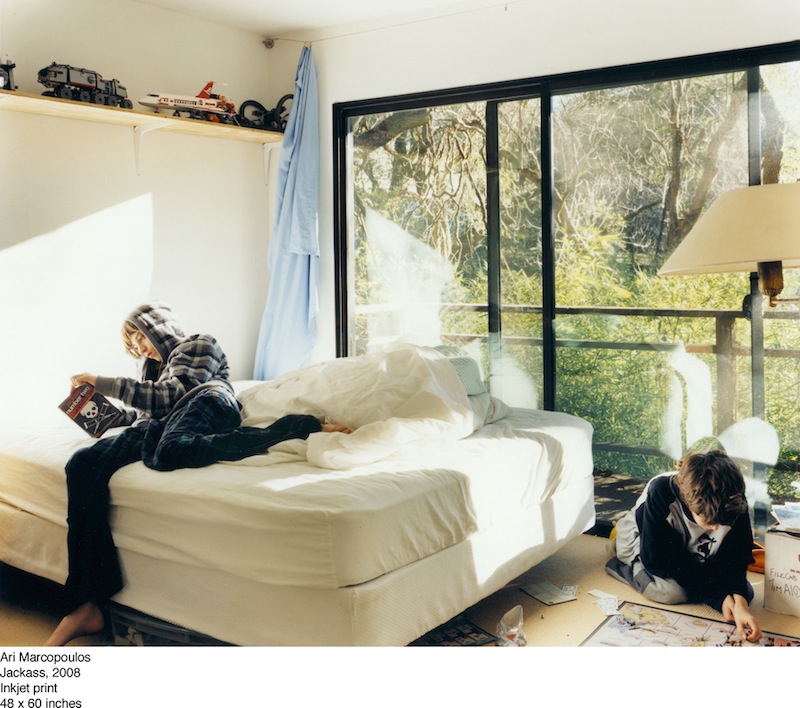
© » KADIST
Ari Marcopoulos
In Jackass (2008) by Ari Marcopoulos, his two sons, Cairo and Ethan, are pictured relaxing in a disheveled bedroom in their Sonoma home. One plays with some sort of board game while the other holds either a book or DVD of the movie Jackass Number Two, presumably the source of the photograph’s title. As Marcopoulos has continued to document his sons, and as they have become teenagers, the images of them begin to closely resemble the teenagers in much of his earlier work.

© » KADIST
Zanele Muholi
As a visual activist for the rights of Lesbian, gay, bisexual, transgender, queer and intersex (LBGTQI), Muholi’s photographs radically transgress the conventional perception of lesbian and transgender communities in South Africa. Members of the LBGTQI community who suffer from continuous attacks — “corrective” and “curative rapes”, physical and psychological assaults, and hate crimes — Muholi works from her own community to create strong and positive images of empowered individuals. As visual statements, her photographs seek to dignify the members of an often hidden, voiceless and marginalized community.

© » KADIST
Elad Lassry
In establishing a deliberate distance between viewer and subject, Lassry raises questions about representation itself and how all portraits are, in effect, fully constructed objects that only gain meaning once we ascribe them with our own personal associations and emotions. An example of this is Floor, Legs (2013), a gelatin silver print in which a large black rectangle obscures the upper half of a candid photograph with two figures that are ultimately only identifiable by their legs and feet, which are even then indiscernibly crossed and posed beyond easy recognition. Even though its unclear if Lassry’s source image is a found photograph or an original composition, the underlying themes – of the photograph’s function as an object, and the impossibility of discerning “the real” through its representation – continue to resonate.

© » KADIST
Tina Modotti
The Italian photographer Tina Modotti is known for her documentation of the mural movement in Mexico. She had a keen eye for architectural composition, and captured eloquent details using a delicate platinum print process. In 1929 she was deported from Mexico because of her involvement in the Communist party and went to Europe.

© » KADIST
Elad Lassry
The black-and-white photograph Men (055, 065) (2012) depicts two similarly built young men – young and slim, with dark tousled hair and a square jaw line – seated aside one another in identical outfits. It is unclear if these subjects are related, despite the obvious doubling of visual cues, and Lassry offers few hints to suggest that these men have any association beyond their sitting for the same picture. By extension, Lassry subverts conventions in portrait photography by identifying his subjects with numbers, erasing the familiarity inherent in the act of naming, Men (055, 065) functions as an anti-portrait in which anonymity supplants intimacy.

© » KADIST
Miljohn Ruperto
Miljohn Ruperto’s research-based multidisciplinary practice often deals with possession, re-enactment, mythology and archives. These conceptual throughlines also underpin Ruperto and Minnesota-based director Rini Yun Keagy’s eerie experimental documentary Ordinal (SW/NE) , which collapses mythology, scientific research, Californian agricultural history, American literature, and speculative fiction into a poetic and timely examination of possession, infection, and individual agency in an age of wanton industrial agriculture and alienation. Ordinal (SW/NE) tells the tale of a young Black man named Josiah as he navigates the banalities of daily life while potentially being possessed by a malignant supernatural force or stricken by valley fever, a little-known yet gruesome and sometimes lethal real-life respiratory illness which disproportionately affects farm and field workers, particularly Filipinos and African-Americans.
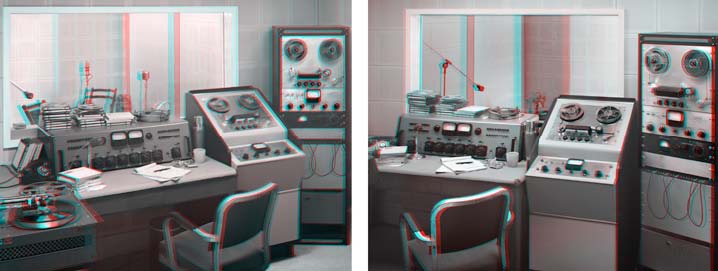
© » KADIST
Mark Soo
The two large-scale stereoscopic photographs in That’s That’s Alright Alright Mama Mama depict a recreation of Elvis Presley’s recording studio in Memphis, Tennessee. This study in doubles is underscored by its title, which repeats and doubles Elvis’s original song title. The images are hung in a specially angled wall and the viewers are provided special 3-D glasses in order to contemplate the image.

© » KADIST
Ed Ruscha
In 1970, Ruscha began a series of paintings made from stains. He experimented with a variety of materials (gun powder, dust, blood, among many others) to leave surface traces of different objects. The resulting images are negative shapes amidst blurry environments like Splinters and Seconal in which a grey surface is imprinted with the materials mentioned in the title.

© » KADIST
Ari Marcopoulos
A photograph of a tin box full of marijuana simply titled Green Box, speaks to the constantly changing status of the substance–once taboo or illicit, now a symbol of a growing industry in Northern California. In the past a photograph of marijuana would more likely be found in an evidence file than an art museum or gallery, but today continued debates about the legality of marijuana and the industry surrounding it has brought the substance into common public view. Green Box is a strong example of the current sociopolitical state of California and the grey areas that exist in legislature and at the same time illustrates the unavoidable commercialization of once underground cultures.
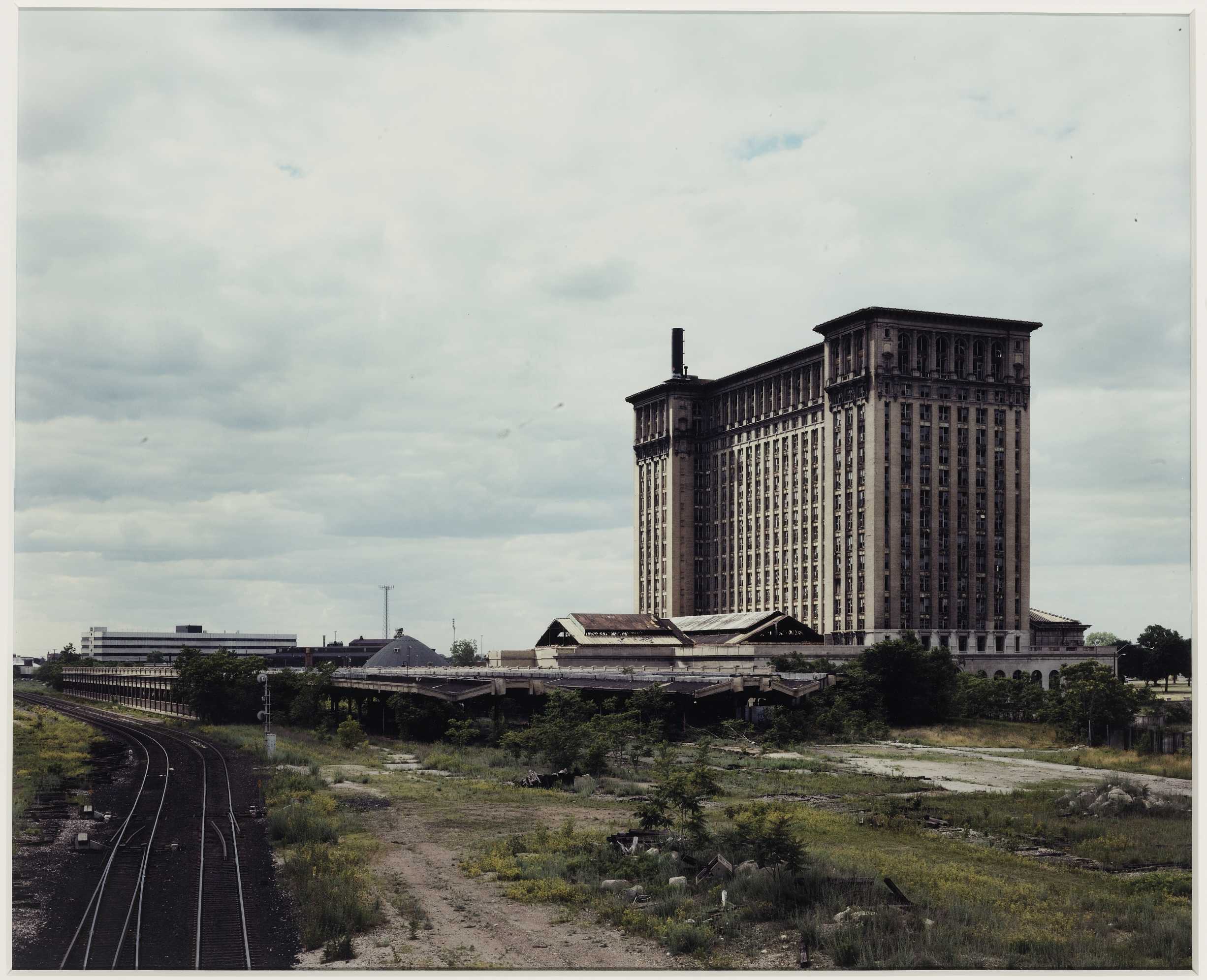
© » KADIST
Stan Douglas
Michigan Central Station is part of a larger photographic series, Detroit Photos , which includes images of houses, theaters, stadiums, offices, and other municipal structures. Continuing his fascination with failed modernist utopias, Douglas depicts Michigan Central Station as a monolithic, almost prison-like structure lording over a desolate landscape. Once the hub of industrial transportation, the station is now devoid of any human activity and lies fallow, surrounded by train-less tracks and vegetation-less ground.

© » KADIST
Enrique Ramirez
Enrique Ramirez’s La Memoria Verde is a work of poetry, politics, and memory created in response to the curatorial statement for the 13th Havana Biennial in 2019, The Construction of the Possible . Other well known works by Ramirez feature the movement and endless symbolism of the sea—like the simultaneous engagement and retreat of the tide—but La Memoria Verde takes the land, plant life, and its human inhabitants as its subject. The film begins with a soft, green, algae-like image that waxes and wanes in focus, then gives way to swaying treetops blowing in a soft wind.

© » KADIST
Jeff Wall
As suggested by its title, Pipe Opening (2002) depicts a hole in a wood wall exposed by the removal of a pipe. In contrast to his signature immense tableaux, Pipe Opening is a direct but modest document of a “real” scene that Wall “encountered by chance” in daily life. However factual, the image indicates certain enigmatic significance, allowing multiple interpretations.

© » KADIST
Miljohn Ruperto
Acting Exercise: Demon Possession is a video by Miljohn Ruperto that addresses notions of performativity, the self, and collective truth. Set in an empty, derelict room with nothing but an old mattress on the floor, the film features a series of actors independently performing a demonic possession, or at least their interpretation of what one would look like. Although each reenactment is slightly different, actor after actor, the viewer is confronted with a common thread: a near archetypal response that binds them all together.

© » KADIST
Enrique Ramirez
In Un Hombre que Camina (A Man Walking) (2011-2014), the sense of rhythm and timing is overpowered by the colossal sense of timelessness of this peculiar place. Shot in Uyuni, Bolivia, the film depcits world’s largest salt flat, a site that sits in a mountainous region at over twelve thousand feet above sea level. Ramirez’s work is deeply invested in the loss of regional identity, and the anachronistic dress of his “modern-day shaman” in the film is meant to reconcile the historical and cultural gaps between tribal traditions of a specific time and place and the all-too-prevalent homogeneity brought on by advanced capitalism.

© » KADIST
Tina Modotti
Modotti’s Diego Rivera Mural: Billionaires Club; Ministry of Education, Mexico D. F., Third Gallery is a photograph of a section of a mural by Diego Rivera in the Ministry of Education in Mexico City. Rivera painted over a hundred frescoes throughout the courtyard of the building, an early mural series that helped revive and popularize the art of mural painting. Modotti, a friend of Rivera’s, took hundreds of photographs of the frescoes which depict divisions of labor in Mexican society.
Miljohn Ruperto
- location: Los Angeles, California
- year born: 1973
- gender: male
- nationality: Filipino and Danish
- home town: Manila, Philippines
Zanele Muholi
- year born: 1972
- gender: female
- nationality: South African
- home town: Umlazi, Durban, South Africa
Enrique Ramirez
- year born: 1979
- gender: male
- nationality: Chilean
- home town: Santiago, Chile
Ed Ruscha
- location: Los Angeles, California
- year born: 1937
- gender: male
- nationality: American
- home town: Omaha, Nebraska
Wong Hoy Cheong
- location: Kuala Lumpur, Malaysia
- year born: 1960
- gender: male
- nationality: Malaysian
- home town: George Town, Malaysia
Ari Marcopoulos
- location: New York, NY
- location: Sonoma, CA
- year born: 1957
- gender: male
- nationality: Dutch
- home town: Amsterdam, Netherlands
Tina Modotti
- location: Mexico City, Mexico
- year born: 1896
- gender: female
- nationality: Italian
- home town: Udine, Italy
An-My LE
- location: New York, New York
- year born: 1960
- gender: female
- home town: Saigon, Vietnam
Stan Douglas
- location: Vancouver, Canada
- year born: 1960
- gender: male
- nationality: Canadian
- home town: Vancouver, Canada
Eleanor Antin
- location: New York, New York
- year born: 1935
- gender: female
- nationality: American
- home town: Bronx, New York
Charwei Tsai
- location: Taipei, Taiwan
- location: Paris, France
- year born: 1980
- gender: female
- nationality: Taiwanese
- home town: Taipei, Taiwan
Mark Soo
Born in Singapore, raised in Malaysia, and based in Canada, artist and curator Mark Soo’s practice is concept-driven and research-based...
Sarah Conaway
- location: Los Angeles, California
- year born: 1972
- gender: female
- nationality: American
- home town: York, Pennsylvania
Jeff Wall
- location: Vancouver, Canada
- year born: 1946
- gender: male
- nationality: Canadian
- home town: Vancouver, Canada
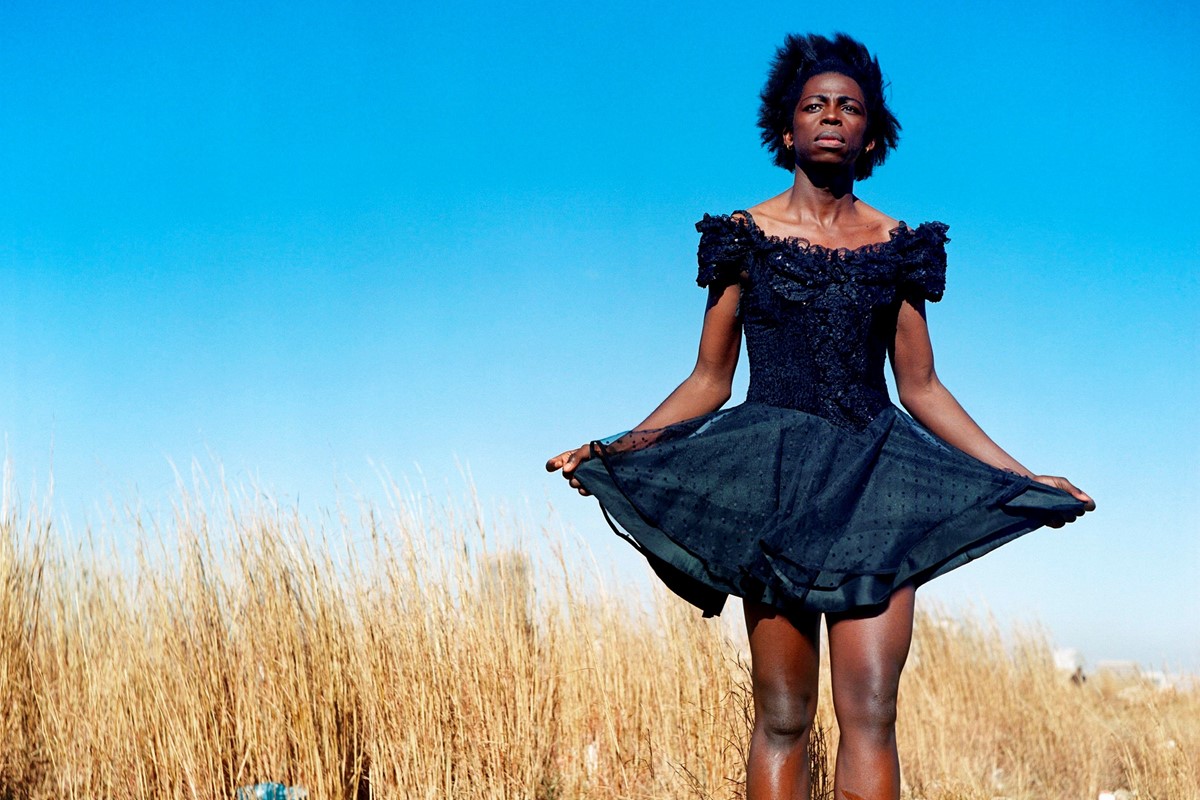
© » ANOTHER
this quarter (02/12/2024)
Zanele Muholi’s Potent Portrait of South Africa’s Queer Community | AnOther As their new exhibition opens in San Francisco, Zanele Muholi talks about their powerful photos of queer survivors of hate crimes, couples in everyday moments, and self-portraits referencing history February 02, 2024 Text Emily Steer Zanele Muholi creates potent portraits...
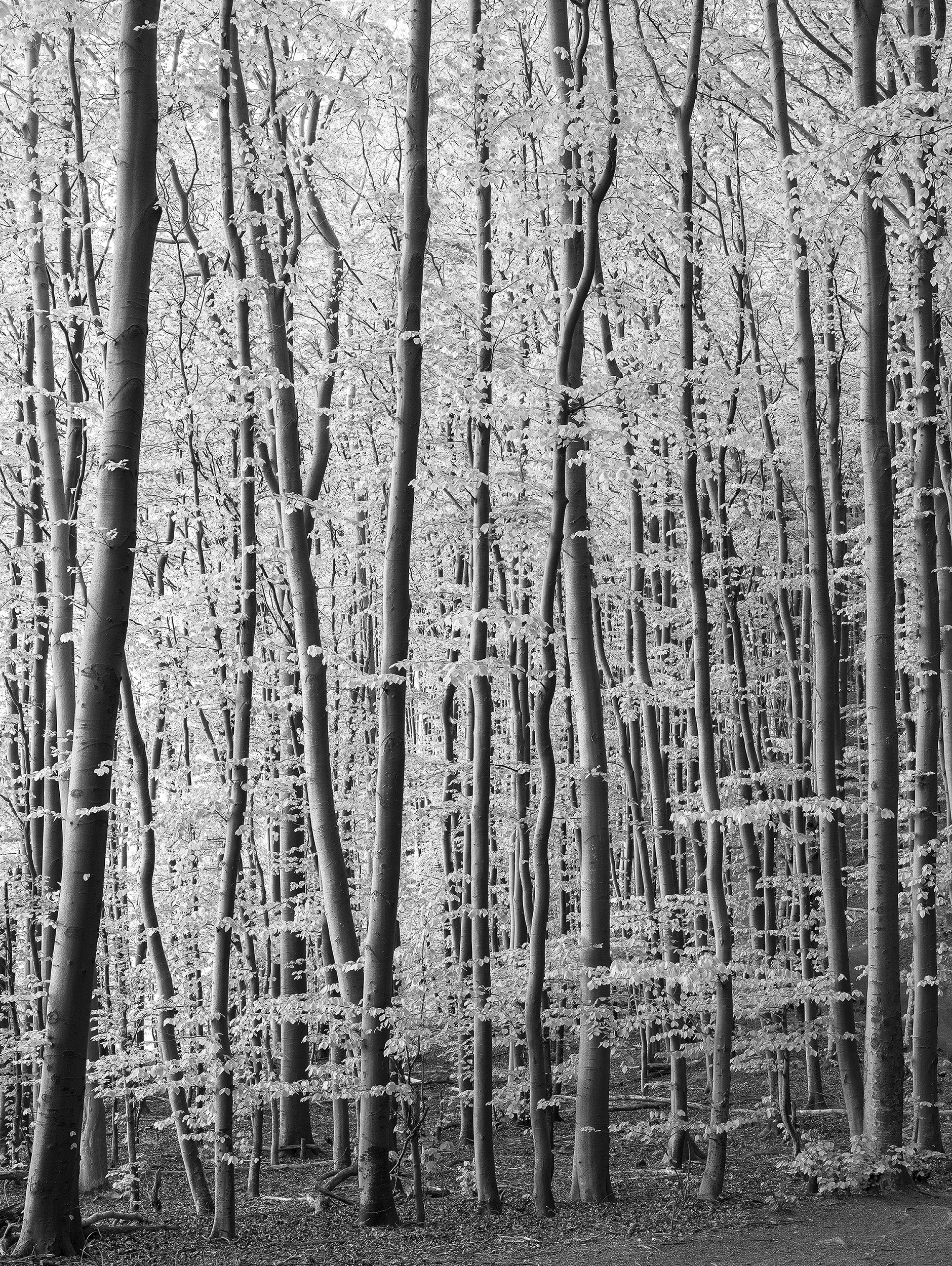
© » ASX
about 3 months ago (01/28/2024)
Loredana Nemes – Graubaum und Himmelmeer – AMERICAN SUBURB X Skip to content Look up the beech in a book for plant taxonomy and you will find a picture of a tall tree with a strong trunk and long branches that form a symmetrical crown...
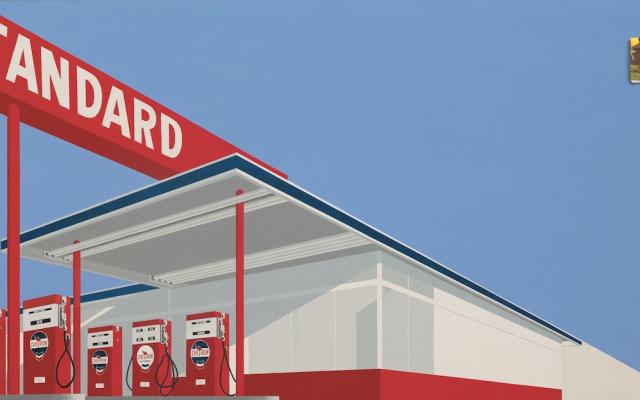
© » ART & OBJECT
about 4 months ago (12/12/2023)
Ed Ruscha's Poetry of the American Experience | Art & Object Skip to main content Subscribe to our free e-letter! Webform Your Email Address Role Art Collector/Enthusiast Artist Art World Professional Academic Country USA Afghanistan Albania Algeria American Samoa Andorra Angola Anguilla Antarctica Antigua & Barbuda Argentina Armenia Aruba Ascension Island Australia Austria Azerbaijan Bahamas Bahrain Bangladesh Barbados Belarus Belgium Belize Benin Bermuda Bhutan Bolivia Bosnia & Herzegovina Botswana Bouvet Island Brazil British Indian Ocean Territory British Virgin Islands Brunei Bulgaria Burkina Faso Burundi Cambodia Cameroon Canada Canary Islands Cape Verde Caribbean Netherlands Cayman Islands Central African Republic Ceuta & Melilla Chad Chile China Christmas Island Clipperton Island Cocos (Keeling) Islands Colombia Comoros Congo - Brazzaville Congo - Kinshasa Cook Islands Costa Rica Croatia Cuba Curaçao Cyprus Czechia Côte d’Ivoire Denmark Diego Garcia Djibouti Dominica Dominican Republic Ecuador Egypt El Salvador Equatorial Guinea Eritrea Estonia Eswatini Ethiopia Falkland Islands Faroe Islands Fiji Finland France French Guiana French Polynesia French Southern Territories Gabon Gambia Georgia Germany Ghana Gibraltar Greece Greenland Grenada Guadeloupe Guam Guatemala Guernsey Guinea Guinea-Bissau Guyana Haiti Heard & McDonald Islands Honduras Hong Kong SAR China Hungary Iceland India Indonesia Iran Iraq Ireland Isle of Man Israel Italy Jamaica Japan Jersey Jordan Kazakhstan Kenya Kiribati Kosovo Kuwait Kyrgyzstan Laos Latvia Lebanon Lesotho Liberia Libya Liechtenstein Lithuania Luxembourg Macao SAR China Madagascar Malawi Malaysia Maldives Mali Malta Marshall Islands Martinique Mauritania Mauritius Mayotte Mexico Micronesia Moldova Monaco Mongolia Montenegro Montserrat Morocco Mozambique Myanmar (Burma) Namibia Nauru Nepal Netherlands Netherlands Antilles New Caledonia New Zealand Nicaragua Niger Nigeria Niue Norfolk Island Northern Mariana Islands North Korea North Macedonia Norway Oman Outlying Oceania Pakistan Palau Palestinian Territories Panama Papua New Guinea Paraguay Peru Philippines Pitcairn Islands Poland Portugal Puerto Rico Qatar Romania Russia Rwanda Réunion Samoa San Marino Saudi Arabia Senegal Serbia Seychelles Sierra Leone Singapore Sint Maarten Slovakia Slovenia Solomon Islands Somalia South Africa South Georgia & South Sandwich Islands South Korea South Sudan Spain Sri Lanka St...
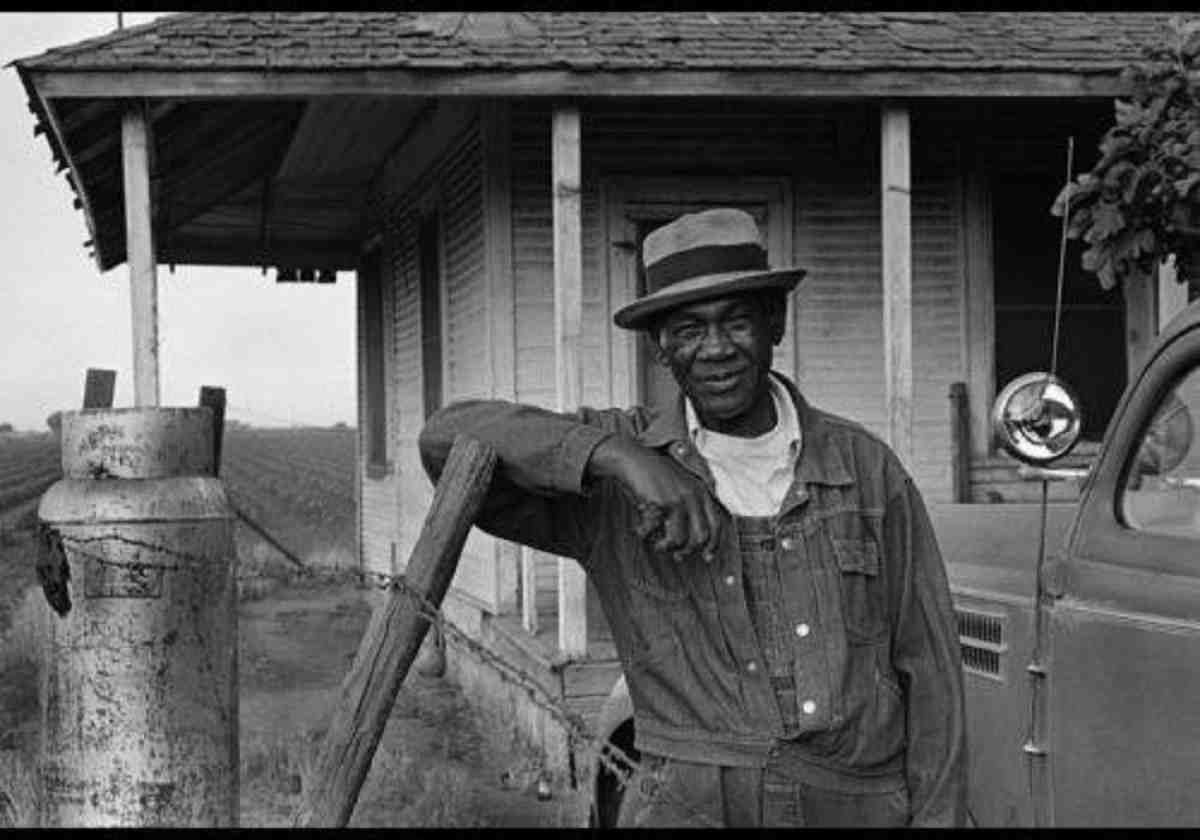
© » ART CENTRON
about 4 months ago (12/09/2023)
Exploring The Other California: A Photographic Journey by Peter Turnley - Artcentron Home » Exploring The Other California: A Photographic Journey by Peter Turnley ART Dec 9, 2023 Ξ Leave a comment Exploring The Other California: A Photographic Journey by Peter Turnley posted by ARTCENTRON Portrait of a Farmer in The Other California, 1975 by Photography by Peter Turnley The Other California , 1975, a photography book by Peter Turnley, celebrates migrant workers, hobos, and everyday heroes, and challenges the prevalent stereotypes of the state...

© » APERTURE
about 4 months ago (12/01/2023)
For the past two decades, An-My Lê has used photography to examine her personal history and the legacies of US military power, probing the tension between experience and storytelling....
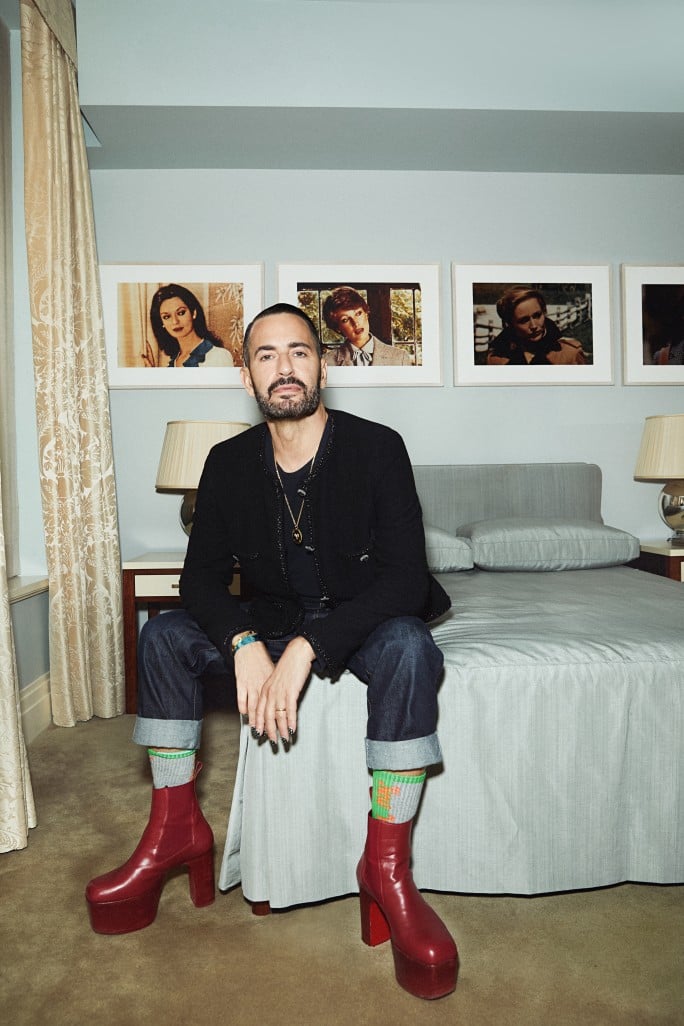
© » LARRY'S LIST
about 19 months ago (10/05/2022)
The fashion designer is selling off all the art inside his West Village townhouse at Sotheby’s New York to make way for a new collection....
-
1920-1929
Tina Modotti
1927Modotti’s Diego Rivera Mural: Billionaires Club; Ministry of Education, Mexico D...
-
1930-1939
Tina Modotti
1930The Italian photographer Tina Modotti is known for her documentation of the mural movement in Mexico...
-
1970-1979
Eleanor Antin
1973Comprised of fifty-one photographic postcards, Antin’s 100 Boots is an epic visual narrative in which 100 black rubber boots stand in for a fictional “hero” making a “trip” from California to New York City...
-
1990-1999
Stan Douglas
1997Michigan Central Station is part of a larger photographic series, Detroit Photos , which includes images of houses, theaters, stadiums, offices, and other municipal structures...
Ari Marcopoulos
1998A photograph of a tin box full of marijuana simply titled Green Box, speaks to the constantly changing status of the substance–once taboo or illicit, now a symbol of a growing industry in Northern California...
-
2000-2009
Wong Hoy Cheong
2004Re: Looking marks a new phase in Wong’s work which connects his region’s history with other parts of the world...
Charwei Tsai
2008Charwai Tsai’s photograph documents her Hermit Crab Project installation upon the construction site of gallery Sora in Tokyo...
Ari Marcopoulos
2008In Jackass (2008) by Ari Marcopoulos, his two sons, Cairo and Ethan, are pictured relaxing in a disheveled bedroom in their Sonoma home...
Miljohn Ruperto
2009Miljohn Ruperto’s silent video work Appearance of Isabel Rosario Cooper is an archive of ghosts...
Wong Hoy Cheong
2009Days of Our Lives: Reading is from a series of work was created for the 10th Biennale de Lyon by the artist...
Wong Hoy Cheong
2009Created for the tenth Lyon Bienniale, in Days of Our Lives: Playing for Dying Mother, Wong’s ongoing negotiation of postcolonial globalization takes aim at French society...
Miljohn Ruperto
2009Acting Exercise: Demon Possession is a video by Miljohn Ruperto that addresses notions of performativity, the self, and collective truth...
-
2010-2019
An-My LE
2010The print Patient Admission, US Naval Hospital Ship Mercy, Vietnam (2010) features an Asian Buddhist monk and an American Navy Solider on board the Mercy ship –one of the two dedicated hospital ships of the United States Navy– sitting upright in their chairs and adopting the same posture...
Elad Lassry
2012The black-and-white photograph Men (055, 065) (2012) depicts two similarly built young men – young and slim, with dark tousled hair and a square jaw line – seated aside one another in identical outfits...
Elad Lassry
2013In his composition, Chocolate Bars, Eggs, Milk, Lassry’s subjects are mirrored in their surroundings (both figuratively, through the chocolate colored backdrop and the brown frame; and literally, in the milky white, polished surface of the table), as the artist plays with color, shape, and the conventions of representational art both within and outside of the photographic tradition...
Miljohn Ruperto
2013Miljohn Ruperto’s high-definition video Janus takes its name from the two-faced Roman god of duality and transitions, of beginnings and endings, gates and doorways...
Elad Lassry
2013In establishing a deliberate distance between viewer and subject, Lassry raises questions about representation itself and how all portraits are, in effect, fully constructed objects that only gain meaning once we ascribe them with our own personal associations and emotions...
Zanele Muholi
2014As a visual activist for the rights of Lesbian, gay, bisexual, transgender, queer and intersex (LBGTQI), Muholi’s photographs radically transgress the conventional perception of lesbian and transgender communities in South Africa...
Zanele Muholi
2014As a visual activist for the rights of Lesbian, gay, bisexual, transgender, queer and intersex (LBGTQI), Muholi’s photographs radically transgress the conventional perception of lesbian and transgender communities in South Africa...
Zanele Muholi
2014As a visual activist for the rights of Lesbian, gay, bisexual, transgender, queer and intersex (LBGTQI), Muholi’s photographs radically transgress the conventional perception of lesbian and transgender communities in South Africa...
Enrique Ramirez
2017Ramirez’s The International Sail is the fifth in a series that features an upside-down worn out, mended and fragmented boat sail...
Miljohn Ruperto
2017Miljohn Ruperto’s research-based multidisciplinary practice often deals with possession, re-enactment, mythology and archives...
Enrique Ramirez
2019Enrique Ramirez’s La Memoria Verde is a work of poetry, politics, and memory created in response to the curatorial statement for the 13th Havana Biennial in 2019, The Construction of the Possible ...
